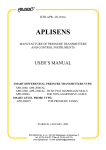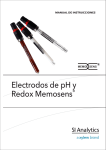Download - Aplisens SA
Transcript
DTR.APCE.APRE.02(ENG) APLISENS MANUFACTURE OF PRESSURE TRANSMITTERS AND CONTROL INSTRUMENTS USER’S MANUAL SMART PRESSURE TRANSMITTER type: APCE-2000, APCE-2000G SMART DIFFERENTIAL PRESSURE TRANSMITTER type: APRE-2000, APRE-2200, APRE-2000G SMART LEVEL PROBES type: APR-2000Y Edition C1 WARSAW AUGUST 2015 APLISENS S.A. 03-192 Warszawa, ul. Morelowa 7 tel. +48 22 814 07 77; fax +48 22 814 07 78 www.aplisens.pl, e-mail: [email protected] Symbols used Symbol Description Warning to proceed strictly in accordance with the information contained in the documentation in order to ensure the safety and full functionality of the device. i Information particularly useful during installation and operation of the device. Information particularly useful during installation and operation of a type Ex device. Information on disposal of used equipment. BASIC REQUIREMENTS AND SAFE USE - The manufacturer will not be liable for damage resulting from incorrect installation, - - - - failure to maintain the device in a suitable technical condition, or use of the device other than for its intended purpose. Installation should be carried out by qualified staff having the required authorizations to install electrical and pressure-measuring devices. The installer is responsible for performing the installation in accordance with these instructions and with the electromagnetic compatibility and safety regulations and standards applicable to the type of installation. The device should be configured appropriately for the purpose for which it is to be used. Incorrect configuration may cause erroneous functioning, leading to damage to the device or an accident. In systems with pressure transmitters there exists, in case of leakage, a danger to staff on the side where the medium is under pressure. All safety and protection requirements must be observed during installation, operation and inspections. If a device is not functioning correctly, disconnect it and send it for repair to the manufacturer or to a firm authorized by the manufacturer. In order to minimize the risk of malfunction and associated risks to staff, the device is not to be installed or used in particularly unfavourable conditions, where the following dangers occur: - possibility of mechanical impacts, excessive shocks and vibration; - excessive temperature fluctuation, exposure to direct sunlight; - condensation of water vapour, dust, icing. Installation of intrinsic safety versions should be performed with particular care, in accordance with the regulations and standards applicable to that type of installation. Changes to the products manufacturing documentation may forestall a paper user updating. Current Instruction Manual is available at Producer http. on www.aplisens.pl C1 I. 1. 2. 3. 4. 5. 1 DTR.APCE.APRE.02(ENG) CONTENTS APPENDIX Ex ....................................................................................................................................... 2 INTRODUCTION .................................................................................................................................... 5 USER MATERIALS................................................................................................................................ 5 APPLICATIONS AND MAIN FEATURES............................................................................................... 5 IDENTIFYING MARKS. ORDERING PROCEDURE ............................................................................... 5 TECHNICAL DATA. ............................................................................................................................... 6 5.1. APCE..., APRE... - COMMON PARAMETERS .................................................................................................................. 6 5.2. APCE...- MEASUREMENT RANGES AND METROLOGICAL PARAMETERS. ............................................................................ 7 5.3. APRE-2000 - MEASUREMENT RANGES AND METROLOGICAL PARAMETERS ...................................................................... 8 5.4. APRE-2200, MEASUREMENT RANGES AND METROLOGICAL PARAMETERS ....................................................................... 9 5.5. APCE–2000G, APRE–2000G, MEASUREMENT RANGES AND METROLOGICAL PARAMETERS. ......................................... 9 5.6. APR–2000Y. MEASUREMENT RANGES AND METROLOGICAL PARAMETERS. ................................................................... 10 6. 7. 8. 9. CONSTRUCTION,PRESSURECONNECTORS,ELECTRICALCONNECTORS...........................................................10 6.1. MEASUREMENT PRINCIPLES, ELECTRONIC SYSTEM ..................................................................................................... 10 6.2. CONSTRUCTION ......................................................................................................................................................... 10 6.3. CASING, ELECTRICAL CONNECTIONS........................................................................................................................... 11 PLACE OF INSTALLATION OF TRANSMITTERS ...............................................................................11 7.1. GENERAL RECOMMENDATIONS .................................................................................................................................... 11 7.2. LOW AMBIENT TEMPERATURE ..................................................................................................................................... 11 7.3. HIGH MEDIUM TEMPERATURE ..................................................................................................................................... 12 7.4. MECHANICAL VIBRATION, CORROSIVE MEDIA .............................................................................................................. 12 INSTALLATION AND MECHANICAL CONNECTIONS.........................................................................12 8.1. APCE... INSTALLATION AND CONNECTIONS.................................................................................................................. 12 8.2. APRE... INSTALLATION AND CONNECTIONS.................................................................................................................. 12 8.3. APRE-2000G. INSTALLATION AND CONNECTIONS ....................................................................................................... 13 8.4. APR-2000Y. INSTALLATION AND CONNECTIONS .......................................................................................................... 13 ELECTRICAL CONNECTION ...............................................................................................................13 9.1. GENERAL RECOMMENDATIONS .................................................................................................................................... 13 9.2. CONNECTIONS FOR TRANSMITTERS WITH PD-TYPE CONNECTOR. .................................................................................. 13 9.3. CONNECTIONS FOR TRANSMITTERS WITH TERMINAL BOX (PZ-TYPE CONNECTOR). .......................................................... 14 9.4. PROTECTION FROM EXCESS VOLTAGE ......................................................................................................................... 14 9.5. EARTHING ................................................................................................................................................................. 14 10. SETTING AND REGULATION ..............................................................................................................14 10.1. TRANSMITTER RANGE, DEFINITIONS .......................................................................................................................... 14 10.2. CONFIGURATION AND CALIBRATION ........................................................................................................................... 15 11. SERVICES AND SPARE PARTS. .........................................................................................................18 11.1. PERIODIC SERVICE ................................................................................................................................................... 18 11.2. UNSCHEDULED INSPECTIONS .................................................................................................................................... 18 11.3. CLEANING THE DIAPHRAGM SEAL, OVERLOADING DAMAGE ........................................................................................ 19 11.4. SPARE PARTS. ......................................................................................................................................................... 19 12. 13. 14. 15. PACKING, STORAGE AND TRANSPORT ...........................................................................................19 GUARANTEE .......................................................................................................................................19 ADDITIONAL INFORMATION...............................................................................................................19 FIGURES ..............................................................................................................................................20 FIGURE 1. APCE...,APRE... TRANSMITTERS – BLOCK DIAGRAM. ......................................................................................... 20 FIGURE 2. ELECTRICAL CONNECTIONS FOR APCE..., APRE... TRANSMITTERS. .................................................................... 20 FIGURE 3. APCE-2000 TRANSMITTER WITH PD CONNECTOR. ............................................................................................. 21 FIGURE 4. APCE-2000 TRANSMITTER WITH PZ CONNECTOR.............................................................................................. 21 FIGURE 5. M-TYPE CONNECTOR WITH M20X1.5 THREAD. .................................................................................................... 22 FIGURE 6. P-TYPE CONNECTOR WITH M20X1.5 THREAD. ..................................................................................................... 22 FIGURE 7. CM30X2-TYPE CONNECTOR WITH FLUSH DIAPHRAGM WITH M30X2 THREAD. ........................................................ 22 FIGURE 8. G1/2” AND G1” PROCESS CONNECTIONS. .......................................................................................................... 23 FIGURE 9. APRE-2000 DIFFERENTIAL PRESSURE TRANSMITTER WITH P-TYPE CONNECTOR. ................................................. 24 FIGURE 10. APRE-2000 DIFFERENTIAL PRESSURE TRANSMITTER WITH C TYPE VENTED COVERS. ......................................... 25 FIGURE 11. APRE-2000 DIFFERENTIAL PRESSURE TRANSMITTER WITH A SINGLE DIRECT DIAPHRAGM SEAL (EXAMPLES). ........ 25 FIGURE 12. APRE-2200 DIFFERENTIAL PRESSURE TRANSMITTER WITH TWO REMOTE DIAPHRAGM SEALS (EXAMPLES). ......... 26 FIGURE 13. APRE-2200 DIFFERENTIAL PRESSURE TRANSMITTER WITH DIRECT DIAPHRAGM SEAL AND REMOTE DIAPHRAGM SEAL (EXAMPLES). ........................................................................................................ 26 FIGURE 14. APCE-2000G SMART PRESSURE TRANSMITTER AND APRE-2000G SMART DIFFERENTIAL PRESSURE TRANSMITTER FOR LOW RANGES. ........................................................................................................................ 27 FIGURE 15. APR-2000Y SMART LEVEL PROBE FOR PRESSURE TANKS................................................................................. 28 FIGURE 16. ADDITIONAL EQUIPMENT FOR FITTING OF PRESSURE TRANSMITTERS. .................................................................. 29 FIGURE 17. EXAMPLE: HOW TO INSTALL THE APRE-2200 TRANSMITTERS WITH REMOTE DIAPHRAGM..................................... 30 FIGURE 18. EXAMPLE: HOW TO INSTALL THE APRE-2000 TRANSMITTER ON A VERTICAL OR HORIZONTAL PIPE. ...................... 30 FIGURE 19. EXAMPLE: HOW TO INSTALL THE APRE-2000 TRANSMITTER WITH A VALVE MANIFOLD TO A WALL. ........................ 31 C1 I. 2 DTR.APCE.APRE.02(ENG) APPENDIX Ex 1453 SMART PRESSURE TRANSMITTER type APCE–2000, APCE-2000G SMART DIFFERENTIAL PRESSURE TRANSMITTERS type APRE-2000, APRE-2200, APRE-2000G SMART LEVEL PROBES type APR–2000Y Ex VERSIONS 1. Introduction 1.1. This “Appendix Ex.02” applies only to the APCE-2000, APCE-2000G, APRE-2000, APRE-2200, APRE-2000G, APR-2000Y intrinsically safe (Exi) transmitters designed in accordance with ATEX Directive, provided with the rating plate as specified in section and information about Exi design in the Product Certificate. 1.2. The appendix contains supplementary information relating intrinsically safe versions of transmitters. During installation and use of Ex transmitters, reference should be made to DTR.APC.APR.02(ENG) in conjunction with “Appendix Ex.02”. 2. Use of APCE-2000, APCE-2000G, APRE-2000, APRE-2200 and APRE-2000G, APR-2000Y transmitters in hazardous areas 2.1. The transmitters are designed and manufactured in accordance with the requirements of the following standards: EN 60079-0:2009, EN 60079-26:2007, EN 60079-11:2012, EN 50303:2002. 2.2. The transmitters may operate in potentially explosive areas in accordance with the rating of the explosion protection design: I M1 Ex ia I Ma II 1/2G Ex ia IIC T4/T5/T6 Ga/Gb II 1D Ex ia IIIC T110ºC Da KDB 12ATEX 0077X 3. Identifying marks Intrinsically safe transmitters are provided with a rating plate containing the information specified in paragraph 4 of DTR.APCE.APRE.02(ENG) and also at least the following: CE mark and number of notified unit: 1453 in the case of GIG KDB; “Ex” mark, designation of explosion protection design, certificate number; Values of parameters such as. Ui, Ii, Pi, Ci, Li; Marking of electrical and process connections; Year of manufacture. 4. User information Together with the ordered intrinsically safe transmitters, user receives: a. Product Certificate, which is also a warranty card; b. Declaration of Conformity; c. Copy of certificate – on request; d. User Manual numbered: DTR.APCE.APRE.02(ENG) with Appendix Ex. Items b, c and d are accessed at www.aplisens.pl 5. Permitted input parameters (based on data from the KDB 12ATEX 0077X and certificates and certification documentation) Permissible input parameters for power supply with linear output characteristic Ui = 30V; Ii = 0.1A; Pi - according to Table 1 Permissible input parameters for power supply with trapezoidal and rectangular output characteristic Ui = 24V; Ii = 0.1A; Pi - according to Table 1 Input inductance and capacity: Ci = 11nF; Li = 1mH The dependence of transmitter temperature class from temperature Ta[ºC] and delivered power Pi[W] for all kinds of power supplies was introduced in Table No 1, where: Ta – ambient temperature of mounted transmitter (for example at tank). C1 3 DTR.APCE.APRE.02(ENG) Appendix Ex.02 Table 1 Pi [W] 0.75 1.2 i Ta [ºC] Temperature class 55 T6 70 T5 80 T4, group I, D 45 T6 60 T5 80 T4, group I, D Version of transmitter with surge arrester, marked on the plate “Version Exi SA”, does not meet the requirements of Section 10,3 of the EN 60079-11 (500Vrms). This must be taken into account when installing the equipment. Supply examples: transmitter Power supply with a linear output characteristic may be e.g. a typical barrier with parameters Uo = 28V; Io = 0.093A; Rw = 300 Ω. Rw ID Ui Uo transmitter Fig.1. Power supply from a source with linear characteristic. Power supply with a trapezial output characteristic Ui = 24 V; Ii = 0.1A Example of power supply from a source with trapezial characteristic (see Fig. 2). Iz Rw ID Ui Uo Uq Rw2 Ui Uo Fig. 2. Power supply from a source with trapezial characteristic. Uq If Uo < 2 Uq = then 4Pi Ii , Rw = Uq , Ii Pi = Uo(Uq-Uo) Rw` Power supply with rectangular output characteristic Ui = 24V; Ii = 0.1A The supply of power from a source with a rectangular output characteristic means that the voltage of the Ex power supply remains constant until current limitation activates. The protection level of power supplies with a rectangular output characteristic is normally “ib”. Transmitters powered from such a supply are also an Ex devices with protection level “ib”. Example of practical provision of power supply for case a): – use a stabilized power supply with Ui=24V with protection level “ib” and current limited to Ii=25mA or 50mA. Rw C1 4 DTR.APCE.APRE.02(ENG) Appendix Ex.02 6. How to connect Ex transmitters Connection between transmitter and other devices in the measuring loop should be made in accordance with the requirements of intrinsically safe standards and instructions for use in hazard areas. Non-compliance with the intrinsic safety requirements may cause the transmitter to explode and hazard to human safety and health. Hazardous area Safe area PD electrical connector DIN 43650 PG-11 cable gland, cable 8...10 mm PG-9 cable gland, cable 6...8 mm Earthing terminal external To measure the transmitter output current without disconnecting the measuring circuit, connect a milliammeter to control terminals 1 and 3. 1 3 2 + _ + Ro Control terminal _ Z Ex power supply Terminal 1 - "+" Terminal 2 - "-" Earthing terminal internal F1 F2 F3 PF RE F4 DEF GHI @%& JKL MNO PQR +/ STU VWX YZ# . 7 At hazardous areas,connections to the transmitter terminals should be made using instruments with Ex certificate. In the absence of a such instruments the transmitter should be configured and calibrated within a safe zone. M20x1,5 cable gland F4 PV ABC 4 1 8 5 2 9 6 3 0 * Ex communicator cable 1 "+" 2 "-" PZ electrical connector (terminal box), Terminals 1, 2 of the box correspond to terminals 1, 2 of the PD connector. 7. Basic requirements according to EN 50039 for type A and B leads used to connect the transmitter to the power supply and measurement circuit. 7.1. Thickness of insulation according to type of material, but not less than 0.2 mm. 7.2. Insulation strength: - 2UN but not less than 500VAC for the wire; - 500VAC between the cable screen and the connected wires; - 1000VAC between two groups of wires, each of which contains half the connected wires of the cable. 7.3. Multiwire cable must not carry any circuit which is not an intrinsically safe circuit. 7.4. The cable must not carry circuits with a maximum voltage exceeding 60V. 7.5. The cables should be protected from damage, for example using channels, shielding pipes, cable racks, durable fastenings etc. i Under no circumstances may the electrical system of the transmitter be repaired or otherwise handled by the user. Damage assessments and repairs may only be carried out by the manufacturer or its authorized dealer C1 5 DTR.APCE.APRE.02(ENG) 1. INTRODUCTION 1.1. This User Manual is intended for users of APCE–2000, APCE-2000G smart pressure transmitters, APRE–2000, APRE–2200, APRE–2000G smart differential pressure transmitters and APR-2000Y smart level probes. The instruction contains the data and guidelines necessary to understand the functioning of the transmitters and how to operate them. It includes essential recommendations concerning installation and use, as well as emergency procedures. 1.2. Technical data for the diaphragm seals for the APCE-2000, APRE-2000, APRE-2200 transmitters are contained in the catalogue cards “DIAPHRAGM SEALS”. 1.3. The transmitters comply with the requirements of EU directives as shown on the plate and with the relevant Declaration of Conformity. 1.4. Additional information for APCE–2000, APCE-2000G, APRE–2000, APRE–2000G, APR–2000Y and APRE–2200 transmitters in Ex versions covered by the EC-type test certificate number KDB 12ATEX 0077X is contained in the appendix designated DTR.APCE.APRE.02(ENG) Appendix Ex.02. During installation and use of the transmitters in Ex version, reference should be made to DTR.APCE.APRE.02(ENG) in conjunction with Appendix Ex.02. 1.5. The APCE–2000, APRE-2000 transmitters are also made in a version which complies with the PED pressure directive, meet the requirements for category IV, and then carry additional markings as in p. 4.3 and 4.4. 1.6. Parameters and information given for APCE..., APRE... transmitters apply to the APCE–2000, APCE-2000G, APRE-2000, APRE–2200, APRE-2200, APRE–2000G, APR-2000Y transmitters and to the explosion-proof versions as well as all variants with different types of electrical and process connections. i 2. USER MATERIALS Transmitters are delivered in single and/or multiple packs. Every transmitter is delivered together with: a. Product Certificate, which is also a warranty card; b. Declaration of Conformity; c. Copy of certificate – on request; d. User Manual numbered: DTR.APCE.APRE.02(ENG). Documents b, c and d are accessed at www.aplisens.pl 3. APPLICATIONS AND MAIN FEATURES 3.1. The APCE... pressure transmitter series are designed to measure gauge pressure, vacuum pressure and absolute pressure of gases, vapours and liquids including corrosive substances. 3.2. Differential pressure transmitters APRE–2000 series are used to measure liquid levels in closed tanks, with static pressure up to 25MPa or 32MPa for special versions, and to measure differential pressure liquid and gases at elements such as filters, orifices, etc. 3.3. The transmitters may be fitted with a range of types of process connectors, which enables them to be used in a variety of conditions such as thick or highly reactive media, high and low temperatures, etc. 3.4. APRE–2000G transmitters are designed to measure absolute, gauge, and differential pressure of nonreactive gases. Typical applications are low pressure measurement include the measurement of air blasts, chimney draughts, or pressure and overpressure in combustion chambers. The transmitters are constructed up to 35kPa or 100kPa overpressures. 3.5. APR-2000Y level probes are used to measure the level in closed tanks where the medium is accessed from the tank top. 3.6. APCE..., APRE... transmitters generate a 4...20mA output signal and a digital communication signal in a two-wire system. The use of smart electronics enables regulation of the zero point, the measurement range, damping, radical conversion characteristic and other functions using an Aplisens KAP communicator or a HART/RS232 converter, Aplisens “RAPORT 2” configuration software and a PC computer. i 4. IDENTIFYING MARKS. ORDERING PROCEDURE 4.1. Every transmitter carries a rating plate containing at least the following information: name of manufacturer, CE mark, numbers of notified institutions and designations of certificates obtained, product type, basic range, min. set range, static pressure limit, output signal, series number, power supply voltage. Version types and the method of specifying of the desired product by ordering are described in the current “Information Cards” and the Catalogue. C1 6 i 5. DTR.APCE.APRE.02(ENG) 4.2. APCE..., APRE... transmitters in Ex approval have additional markings as are described in DTR.APCE.APRE.02(ENG) Appendix Ex.02. 4.3. The rating plates of APCE-2000 transmitters in versions compliant with the PED pressure directive contain the notified unit number 0062 next to the CE mark, as well as the designations of certificates number H1. 4.4. The rating plates of APRE-2000 transmitters in versions compliant with the PED pressure directive contain the notified unit number 0062 next to the CE mark, as well as the designations of certificates number H1. TECHNICAL DATA. 5.1. APCE..., APRE... - Common parameters 5.1.1. APCE..., APRE... Electrical parameters Power supply normal versions 7.5 ÷ 55V DC, rated 24V DC intrinsic-safe versions in accordance with Appendix Ex.02. Output signal 4÷20mA (or 20÷4mA) with HART Communication via HART transmission protocol and signal 4…20 mA. For this purpose KAP-03, KAP-03Ex communicator or APLISENS converters: HART/RS232 or HART/USB/Bluetooth Converter, or other HART converter and your PC with Report 2 program (see p.10.2.4). Resistance required for HART communication min.250 Usup [V] – 7.5V Load resistance RLmax[Ω] = 0.0225A Time for stabilization of output signal 16…230 ms - set by programming Additional electronic damping 0...60s Voltage for insulation testing 500 VAC or 750 VDC, see 9.4. Excess voltage protection see 9.4. 5.1.2. APCE..., APRE.... Permitted environmental conditions Operating temperature range -40ºC ÷ 85ºC (ambient temperature) – for APCE... -25ºC ÷ 85ºC (ambient temperature) – for APRE... -30ºC ÷ 85ºC (ambient temperature) – for APRE-2000G Operating temperature range for intrinsic-safe versions in accordance with Appendix Ex.02. Medium temperature range -40ºC ÷ 120ºC – direct measurement – for APCE... -25ºC ÷ 120ºC – direct measurement – for APRE..., over 120ºC measurement with the use of a transmission tube or diaphragm seal. Medium temperature range for transmitters compliant with PED directive Thermal compensation range Relative humidity Vibration during operation Exposure to direct sunlight -40ºC ÷ 100ºC – for APCE... -25ºC ÷ 100ºC – for APRE… -25ºC ÷ 80ºC -40ºC ÷ 80ºC for special version APCE… -10ºC ÷ 70ºC for APRE-2000G 0% ÷ 98% max 4g not recommended causing strong transmitter warming 5.1.3. APCE..., APRE... Construction materials Diaphragm seal for APCE... Diaphragm seal for APRE... Sensing module Casing for electronic parts Connectors for APCE... C-type vented covers and connectors for APRE... Liquid filling of the interior the sensing module steel 1.4404/1.4435 (316L) or Hastelloy C276 steel 1.4404/1.4435 (316L) (PED) or Hastelloy C276 steel 1.4404 (316L) steel1.4301 (304) steel 1.4404 (316L) or Hastelloy C276 only for P, GP, CM30x2 steel 1.4404 (316L) Silicone oil, chemically inactive liquid for measurement of oxygen. 5.1.4. APCE..., APRE... Ingress Protection Rating of Case according to EN 60529 IP65 - PD type connector; IP66 - PZ type connector. C1 7 DTR.APCE.APRE.02(ENG) 5.2. APCE...- Measurement ranges and metrological parameters. 5.2.1. APCE..., Measurement ranges Nominal measuring range Overpressure limit Minimum set range Rangeability (without hysteresis)*** (FSO*) 1. 0...1000bar (0...100MPa) 10bar (1MPa) 100:1 1200bar (120MPa) 2. 0...300bar (0...30MPa) 3bar (300kPa) 100:1 450bar (45MPa) 3. 0...160bar (0...16MPa) 1.6bar (160kPa) 100:1 450bar (45MPa) 4. 0...70bar (0...7MPa) 0.7bar (70kPa) 100:1 140bar (14MPa) 5. 0...25bar (0...2.5MPa) 0.25bar (25kPa) 100:1 50bar (5MPa) 6. 0...7bar (0...0.7MPa) 0.07bar (7kPa) 100:1 14bar (1.4MPa) 7. -1...6bar (-100...600kPa) 0.07bar (7kPa) 100:1 14bar (1.4MPa) 8. -1…1.5bar (-100…150kPa) 0.12bar (12kPa) 20:1 4bar (400kPa) 9. 0...2bar (0...200kPa) 100mbar (10kPa) 20:1 4bar (400kPa) 10. 0...1bar (0...100kPa) 50mbar (5kPa) 20:1 2bar (200kPa) 11. -0.5...0.5bar (-50...50kPa) 50mbar (5kPa) 20:1 2bar (200kPa) 12. 0...0.25bar (0...25kPa) 25mbar (2,5kPa) 10:1 1bar (100kPa) 13. -100...100mbar (-10...10kPa) 20mbar (2kPa) 10:1 1bar (100kPa) 14. -15...70mbar* (-1.5...7kPa) 5mbar (0.5kPa) 17:1 0.5bar (50kPa) 15. -25...25mbar** (-2.5...2.5kPa) 2mbar (0.2kPa) 25:1 1bar (100kPa) 16. -7...7mbar** (-7...7kPa) 1mbar (0.1kPa) 14:1 1bar (100kPa) 17. 0...1.3bar abs (0...130kPa abs) 100mbar abs (10kPa abs) 13:1 2bar (200kPa) 18. 0...7bar abs (0...7MPa abs) 0.07bar abs (7kPa abs) 100:1 14bar (1.4MPa) 19. 0...25bar abs (0...2.5MPa abs) 0.25bar abs (25kPa abs) 100:1 50bar (5MPa) 20. 0...70bar abs (0...7MPa abs) 0.7bar abs (70kPa abs) 100:1 140bar (14MPa) * - only for transmitters without diaphragm seal; ** - only for transmitters in Double Sensor version; *** - overpressure limit can be different for version according to PED norm No 97/23/EC. N 5.2.2. APCE..., Metrological parameters Accuracy Long term stability (for the basic range) Double Sensor version Error due to supply voltage changes Thermal error Thermal error for the whole thermal compensation range *) Full Scale Output. ± 0.1% of calibrated range accuracy / 3 years accuracy / 6 years ± 0.002% (FSO*) / 1V ± 0.08% (FSO) / 10ºC (± 0.1% FSO / 10ºC for range n13, 14, 16). ± 0.25% (FSO) (± 0.4% FSO / 10ºC for range n13, 14, 16). 5.2.3. Metrological Parameters APCE-2000 for PED version i APCE-2000 transmitters, in the PED pressure directive versions, are produced with a measurement range in the interval from –1 bar to 400bar gage, or from 0 to 400 bar absolute, with the overpressure up to 440bar. APCE-2000 transmitters with the S-Mazut seal pressure connection, assembled with the PED version can be produced within the range –1bar to 100 bar gage, or within the 0 - 100bar absolute, and the overpressure up to 110bar. Other parameters are as given in p.5.2.2 except that the ambient temperature error is 7mbar/10ºC. The value of the pressure measurement range and related overpressure are given on rating plate and at Product Certificate. C1 8 DTR.APCE.APRE.02(ENG) 5.2.4. APCE..., Pressure Connectors - M-type connector with M20x1.5 thread – see figure 5a – available for PED version; P-type connector with M20x1.5 thread – see figure 6a – available for PED version; CM30x2-type connector with flush diaphragm – see figure 7a; G1/2 -type connector with G1/2” thread – see figure 8a – available for PED version; GP -type connector with G1/2” thread – available for PED version; CG1-type connector with G1” thread and flush diaphragm – see figure 8e – available for PED version; RM – type connector with M20x1.5 thread with radiator; RP – type connector with M20x1.5 thread with hole Φ12 with radiator; G1/4 – type connector with G1/4” thread with hole Φ4 – available for PED version; 1/2NPT M type connector with 1/2NPT tread, available for PED version; R1/2-type connector with R1/2 tread, available for PED version; CG1/2-type connector with G1/2 tread and flush diaphragm, available for PED version; Other connection types by arrangement. 5.3. APRE-2000 - Measurement ranges and metrological parameters 5.3.1. APRE-2000, Measurement ranges N Nominal measuring range (FSO) 1 2 3 4 5 6 7 8 9 10 0...70bar (0...7MPa) 0...16bar (0...1,6MPa) 0...2.5bar (0...200kPa) 0...1bar* (0...100kPa) 0...0.25bar* (0...25kPa) -0.5...0.5bar* (-50...50kPa) -100...100mbar* (-10...10kPa) -5...70mbar* (-0.5...7kPa) -25...25mbar* (-2.5...2.5kPa) -7...7mbar** (-700...700Pa) Minimum set range 7bar 1.6bar 0.2bar 70mbar 10mbar 0.1bar 4mbar 4mbar 2mbar 1mbar (700kPa) (160kPa) (20kPa) (7kPa) (1kPa) (10kPa) (0.4kPa)) (0.4kPa) (0.2kPa) (0.1kPa) Rangeability 10:1 10:1 12.5:1 14:1 25:1 10:1 50:1 18:1 25:1 14:1 Overpressure limit Static pressure limit (70bar for P-type connector) C-type: 250 / 320 / 420 bar P-type: 40 bar (250 bar for version compliant with the PED pressure directive) C-type: 20bar (10bar for PED version); P-type: 40bar * - available in Double Sensor version; ** - available only in Double Sensor version. 5.3.2. APRE-2000, Metrological parameters Accuracy Long term stability (for the basic range) Error due to supply voltage changes Thermal error Thermal error for the whole thermal compensation range Zero shift error for static pressure* ± 0.1% for the basic range accuracy / 3 years ± 0.002% (FSO) / 1V ± 0.08% (FSO) / 10ºC ± 0.3% (FSO) ± 0.08 % (FSO) / 1MPa (for range n 10) ± 0.01 % (FSO) / 1MPa (for range n 3, 4, 5, 6, 7, 8) ± 0.03 % (FSO) / 1MPa (for range n 1, 2) Cut-off on radical characteristic curve of up to10% * Error can be eliminated by the transmitter zeroing in static pressure conditions with zero differential pressure. 5.3.3. APRE-2000, Pressure Connectors APRE-2000 without diaphragm seals - P-type connector with M20x1.5 thread – see fig.9 or C-type connector to mount together with a valve manifold see fig.10. APRE-2000 with single direct diaphragm seal – as in the example (figure 11) or with other diaphragm seals in accordance with catalogue cards “DIAPHRAGM SEALS”. C1 9 DTR.APCE.APRE.02(ENG) 5.4. APRE-2200, Measurement ranges and metrological parameters 5.4.1. APRE-2200, Measurement ranges Nominal range (FSO) Minimum set range -160...160 mbar -0.5...0.5 bar -1.6...2 bar -1.6...16 bar 0.1 mH2O 0.5 mH2O 1.5 mH2O 1bar Vertical Maximum configurable range dependent spacing of Static on the actual vertical spacing of diaphragm pressure limit diaphragm seals. (m) seals. [1,6+( vertical spacing of sealsx94)]mH2O 40bar 1.7m [5+(vertical spacing of sealsx1.04)]mH2O 40bar 6m [20+(vertical spacing of sealsx1.04)]mH2O 40bar 15m 16bar 40bar 15m 5.4.2. APRE-2200, Metrological parameters Accuracy 0.1% (FSO) Thermal error 0.08 % (FSO) / 10ºC Thermal error for the whole thermal compensation range 0.3 % (FSO) Zero shift error for static pressure 0.08 % (FSO) / 1MPa Error related to U supply changes. 0.002 % (FSO) / 1V Additional errors due to effects of sealing see catalogue cards “DIAPHRAGM SEALS”. The maximum vertical diaphragm seal spacing shown in the table applies to level measurement, ensuring that it is possible to set the zero point of the transmitter when the tank is empty. For measurements of density or phase boundaries (in the sugar and chemical industries and in refineries) the vertical spacing of the diaphragm seals can be larger. i 5.4.3. APRE-2200. Permitted Environmental Conditions. Vibration during operation: vibration of the transmitter is not recommended, but vibration is permissible at the place where the seals are installed. Permitted temperature and corrosive properties of medium are dependent on the diaphragm seal type (see catalogue cards “DIAPHRAGM SEALS”). Other parameters as given in 5.1.4. 5.4.4. APRE-2200. Pressure Connectors See fig. 12, 13 and for other remote diaphragm seals - see catalogue cards “DIAPHRAGM SEALS”. 5.5. APCE–2000G, APRE–2000G, Measurement ranges and metrological parameters. 5.5.1 APCE–2000G, APRE–2000G. Measurement ranges Nominal range (FSO) 0...25mbar (0...2500Pa) -2.5...2.5mbar (-250...250Pa) -7...7mbar (-700...700Pa) -25...25mbar (-2500...2500Pa) -100...100mbar (-10...10Pa) N 1 2 3 4 5 Minimum set range 1mbar 0.2mbar 1mbar 5mbar 20mbar (100Pa) (20Pa) (100Pa) (500Pa) (2kPa) Overpressure limit 1bar 350mbar 350mbar 1bar 1bar Static pressure limit 350mbar 350mbar 350mbar 1bar 1bar 5.5.2. APCE–2000G, APRE–2000G. Metrological parameters Nominal range 0...25mbar -2.5...2.5mbar -7...7mbar -25...25mbar -100...100mbar Accuracy 0.075 % 0.25 % 0.1 % 0.1 % 0.075 % Thermal error 0.1 % (FSO)/ 10ºC, max 0.4 % (FSO) for the whole thermal compensation range Thermal compensation range -10 … 70ºC 5.5.3. APCE–2000G, APRE–2000G. Construction Materials Adapter M20x1.5/6x1 brass Valve manifold Stainless steel 1.4404 (316L) Adapter for valve manifold Stainless steel 1.4404 (316L) Connector ¼ NPT brass, steel 1.4404 (316L) or St3S+ (galvanized) (Other materials as given in 5.1.3 for APRE..., APRE-2000, APRE-2200). 5.5.4. APCE–2000G, APRE–2000G. Pressure Connectors - The terminals fit ø 6x1 plastic tubes; Adapter to a valve manifold or ¼ NPT connector - (see. 8.3. and fig.14). C1 10 DTR.APCE.APRE.02(ENG) 5.6. APR–2000Y. Measurement ranges and metrological parameters. 5.6.1. APR–2000Y. Measurement ranges N Basic range Minimum set range Static pressure limit 1 0...6000 mmH2O 2 0...1600 mmH2O 600 mmH2O 160 mmH2O 4 MPa 5.6.2. APR–2000Y. Metrological parameters N Accuracy for nominal measuring range Accuracy for minimum range Error due to ambient temperature changes Zero shift error for static pressure * 1 2 ± 0.16 % ± 0.2 % ± 0.5 % ± 0.6 % 0.4 % for temperatures: -25...+80ºC 0.08 % / 1MPa 0.1 % / 1MPa * This error can be eliminated by zeroing the transmitter in static pressure conditions with zero differential pressure. Range of medium densities: up to 1,1 g/cm3 – (standard version); over 1,1 g/cm3 – (special version by arrangement with APLISENS). 6. CONSTRUCTION, PRESSURE CONNECTORS, ELECTRICAL CONNECTORS 6.1. Measurement Principles, Electronic System APCE... electronic pressure transmitters and APRE... electronic differential pressure transmitters work by converting changes in the resistance of a piezoresistance bridge, which are proportional to the pressure difference being measured, into a standard current signal. The active sensing element is a silicon diaphragm with four (bridge) piezoresistors, separated from the medium by a sealing diaphragm and manometric fluid. The electronic system digitally processes the measurement signal and generates output signals: an analogue: 4÷20 mA signal, and a digital HART communication signal. A transmitter electrical block diagram is presented in Figure 1. On the input circuit two analogue signals are formed, reflecting the measured pressure and the sensing module temperature. These signals are digitized and imputed to a microprocessor. Using data input during the production process adjusts for thermal errors and carries out linearization. After processing, the digital signal is converted into an analogue 4÷20mA current signal, with a superimposed digital communication signal. For communication with the transmitter via analog signal line the Aplisens KAP communicator, or a PC computer meeting the requirements given in 10.2.4, is used. The transmitter’s input point is fitted with a noise filter and elements protecting against excess voltage. 6.2. Construction The main components of the smart pressure transmitter is the sensing module, in which the pressure signal is converted into an electrical signal, and the electronic system, which converts the signal from the sensing module into a 4...20mA output analog signal and produces a digital HART signal. 6.2.1. To the APCE... sensing module transmitters may be installed the pressure connectors as in figures 5a, 6a, 7a, 8 or other. They are equipped with a diaphragm separating the internal part of the head from the medium. 6.2.2. In the APRE–2000 transmitters, the sensing module has two kind of process connectors: P-type connectors (figure 9), or C-type with covers connecting for installation on a valve manifold (figure 10). 6.2.3. The APRE–2000 transmitters may be fitted with a single direct diaphragm seal, mounted on the “+” pressure input of the sensing module, while the “–” input is a ¼NPT socket (figure 11). The APRE–2200 transmitter is fitted with two diaphragm seals and can be produced in two versions: with one direct diaphragm seal and one remote diaphragm seal (figure 13); with two remote diaphragm seals (figure 12). The diaphragm seal transmits the pressure obtained from the medium. The pressure is transmitted via a manometric fluid which fills the space between the diaphragm of the seal and the diaphragm of the sensing module. In the case of remote diaphragm seals, pressure is transmitted via a capillary linking the transmitter’s sensing module to the diaphragm seal. C1 11 DTR.APCE.APRE.02(ENG) The construction of the seals depends on the medium properties and operating conditions for which they are intended. Technical data relating to the diaphragm seals’ dimensions and operating conditions can be found in catalogue cards “DIAPHRAGM SEALS”. 6.2.4. The APRE-2000G are designed to the low pressures measurement of non-aggressive gases, with a permitted overpressure of 35kPa or 100kPa. The basic (economy) version of this transmitter has terminals fitting ø6x1 elastic tubes, while the industrial version has adapters as shown in figure 14. 6.3. Casing, Electrical Connections APCE..., APRE... transmitters are cased in an Ø51 pipe with a PD (DIN 43650) or PZ type connector. 6.3.1. The PD type connector (figure 3) is located on the top of the casing (Ø51 pipe) and sealed with a rubber washer. 6.3.2. Transmitters with a PZ type connector (figure 4) have a terminal box connected permanently to the casing. The box is closed with a lid and has an external and internal earthing terminal. Mounted on the inside a terminal block is equipped with additional control terminals, galvanically connected to terminals 1, 2 and 3. 7. PLACE OF INSTALLATION OF TRANSMITTERS 7.1. General recommendations 7.1.1. The pressure transmitters and differential pressure transmitter can be installed both indoors and outdoors. It is recommended that transmitters installed outdoor should be placed in a box or under cover. There is no need for a cover in the case of transmitters with PZ type electrical connector. 7.1.2. The place of installation should be chosen in such a way as to allow access to the device and to protect it from mechanical damage. In planning the transmitter installation and the pulse lines configuration, should be paid attention to the following requirements: The impulse lines should be as short as possible, with a sufficiently large cross-section, and free of sharp bends, in order to prevent blockages. Where the medium is a gas, the transmitters should be installed above the measuring point, so that condensation flows down towards the site of the pressure measurement; where the medium is a liquid or where a protective liquid is used, the transmitters should be installed below the place where the pressure measurement is taken. The impulse lines should be inclined at a gradient of at least 10cm/m. The levels of filling liquid in the impulse lines should be equal or kept constant difference. The configuration of the impulse lines and the valve connection system should be chosen with regard to the measurement conditions and to requirements such as the need to reset the transmitters in position and the need for access to the impulse lines during water or gas removal and flushing. 7.1.3. Where there is a risk of heavy objects hitting the instrument (resulting, in extreme cases, in a part of the system with transducers being torn off and medium leakage), appropriate means of protection should be applied for safety reasons and to avoid the possibility of sparkling or other, more appropriate location should be selected for the transmitter. 7.1.4. Attention should also be paid to possible installation faults which may lead to measurement errors, such as connections which are not tight, sediment blockage in lines which are too narrow, gas bubbles in a liquid line or liquid column in a gas line etc. i 7.2. Low Ambient Temperature When the solidification point of the liquid whose pressure is being measured is greater than the ambient temperature, steps should be taken to protect the measurement apparatus from freezing effects. This is particularly important in the case open-air installations. Protection is obtained by filling the impulse lines with a mixture of ethylene glycol and water, or another liquid whose solidification point does not exceed the ambient temperature. Thermal insulation can protect the casing of the transmitter and lines only from brief exposure to low temperatures. Where the temperature is very low, the transmitter and impulse lines are should be heated. C1 12 DTR.APCE.APRE.02(ENG) 7.3. High Medium Temperature The APCE..., APRE... transmitters may be used to measure media with temperatures of up to 120ºC. To protect the sensing module from temperatures in excess of 120ºC, suitably long impulse lines are used to disperse the heat and to lower the temperature of the module. Where it is not possible to use impulse lines of the required length, APCE..., APRE... transmitters with remote diaphragm seals should be used (see catalogue cards “DIAPHRAGM SEALS”). Temperature applications for Ex versions in accordance with Appendix Ex.02. 7.4. Mechanical Vibration, Corrosive Media 7.4.1. Transmitters should correctly work with vibrations with amplitudes to 1.6 mm and accelerations to 4g. If strong vibrations are carried via the pressure line and disturb of measuring, use should be made of elastic pulse lines or transmitters with a remote diaphragm seal. 7.4.2. Transmitters should not be installed in places where the diaphragm, made of 1.4404/1.4435 (316L) steel, would be subject to corrosion by the medium being measured. If possible, transmitters with diaphragms made of Hastelloy C276 should be used, or other means of protection applied (e.g. in the form of a separating liquid) or transmitters with diaphragm seals adapted for measuring aggressive mediums according to catalogue cards “DIAPHRAGM SEALS”) should be used. 8. INSTALLATION AND MECHANICAL CONNECTIONS The APCE..., APRE... transmitters (except APRE-2000G and APR-2000Y) can operate in any position. When installed on an object with a high-temperature medium, it is advantageous to mount the transmitter in a horizontal position with the packing gland pointing downwards or to the side, in such a way that the transmitter is kept away from the stream of rising hot air. When the measurement range is small, the reading can be affected by the position of the transmitter and by the configuration of the impulse lines and the way in which they are filled with liquid. This error can be corrected using the zero-setting function after transmitter installation. 8.1. APCE... Installation and connections 8.1.1. The APCE... transmitters can be installed directly on rigid impulse lines. Where connectors are used as in figures 5a, 6a and 7a, it is recommended that connection sockets be used as shown in figure 5b, 6b, 7b or 7c. It is recommended that sockets labelled “Socket CG1” and “Socket CG1/2” Fig. 8 are used for CG1 and CG1/2 connections, respectively. Besides, there are adapters for standard DIN50, (DIN40, DIN25, Clamp2”, Clamp1.5”, Clamp1”) type connections provided for readouts carried out in aseptic conditions using transmitters with CM30x2 connection. There are seals provided for every transmitter with P, CM30x2, CG1, CG1/2 and GP type connections. The seal material is selected based on the pressure value and the type and temperature of the medium. 8.1.2. If the pressure is applied via a flexible plastic tube, the transmitter should be mounted on a support with Red Ø6-M reduction. In case of metal pipes, the used connections should comply with PN-82/M-42306. The types of the impulse tubes (Fig. 16) are to be selected depending on the measured value of the pressure and the medium temperature. 8.1.3. Tighten the transmitter in the socket with a torque appropriate for the type of the used seal and the measured pressure. 8.2. APRE... Installation and connections 8.2.1. The APRE 2000 transmitters can be mounted directly on rigid impulse lines. To connect the transmitters basic versions, with two M20x1.5 stubs (P-type connector), can be use straight connecting elements with nuts (type C). If elastic impulse lines are used for connection purposes, the transmitter should be additionally fastened to a pipe, panel or supporting construction. 8.2.2. The APRE-2000 and APRE-2200 can be installed using the fastener ø25 (figure 17.) on an ø25 pipe or on a flat surface using an angle bracket. 8.2.3. The APRE-2000 with connecting cover (C-type connector) (figure 10) are designed for installation on 3valve or 5-valve manifolds to a 2” pipe or to a flat surface using an fastener C-2” (fig.18) or “U” (fig.19). C1 13 DTR.APCE.APRE.02(ENG) 8.3. APRE-2000G. Installation and connections 8.3.1. The “economy” version of the APRE-2000G transmitter can be mounted on a wall, panel or other stable construction, using a clamp with Ø9 holes (Figure 14). The transmitter is fitted with stubs which fits an Ø 6x1 elastic impulse tube. When the measured impulse is transmitted via a metal terminal with M20x1.5 opening, an adapter is used between the M20x1.5 thread and the Ø6x1 terminal. Transmitters should be installed in a vertical position. Where there is a significant difference between the height at which the transmitter is mounted and the height of the impulse source, particularly if the measurement range is small, the reading may fluctuate depending on the temperature difference between the impulse lines. This effect can be reduced by ensuring that the lines run side by side. 8.3.2. The APRE-2000G transmitter can also be fitted with an adapter (Figure 14) creating a C-type connector, designed for installation on a 3-valve or 5-valve manifold. Aplisens can also supply transmitters ready mounted on valves. 8.4. APR-2000Y. Installation and connections The APR-2000/Y level probes installed in places where liquid levels are measured in closed tanks, with access to medium from top of tank see figure 15 and 10.2.6. Install the probe in a vertical position. Pressure may be transmitted to the installed device only after checking that it has a measurement range which properly corresponds to the value of the measured pressure, that gaskets have been properly selected and fitted, and the connector has been properly screwed tight. Attempts to undo the screws or fixing connector pipes on a transmitter under pressure may cause the medium to leak and create hazards for the personnel. When disassembling the transmitter, it is necessary to disconnect it from the process pressure or bring the pressure to atmospheric level, and to take particular care and precautions in case of media which are highly reactive, caustic, explosive or otherwise hazardous to personnel. If necessary, rinse out this part of the system. Transmitters with flange diaphragm seals are to be installed on the corresponding counterflanges on the facility. It is recommended that the user matches the screw joints material to the pressure, temperature, flange material and seal to ensure tightness of the flange joint in the expected operating conditions. Coarse-threaded screws complying with ISO 261 are to be used for flanges used in the APCE..., APRE... transmitters. Additional data concerning the diaphragm seals are specified in the catalogue cards “DIAPHRAGM SEALS”. i 9. ELECTRICAL CONNECTION 9.1. General recommendations It is recommended that twisted pair cabling be used for the signal lines. If the transmitter and signal line are subject to a large amount of electromagnetic interference, then screened twisted pair cable should be used. The signal wires should not run alongside network power supply cables or near to large electrically-powered devices. The devices used together with the transmitters should be resistant to electromagnetic interference from the transmission line in accordance with compatibility requirements. It is also beneficial to use anti-interference filters on the primary side of the transformers, the power supplies used for the transmitters and apparatus used in conjunction with them. 9.2. Connections for transmitters with PD-type connector The transmitters with PD type connectors are to be connected as shown in figure 2a. To make the connections, remove the terminal block from the contact pins together with its cover. Then remove the block from its cover, levering it off with the end of a screwdriver inserted into the slot provided for this purpose. Connect the wires to the block. Where the isolation of the wires in the cable gland is ineffective (for example, when single wires are used) the opening of the gland should be carefully sealed with an elastic sealing compound to obtain IP65 ingress protection. It is useful to form the segment of the signal wire leading to the PG-11, PG-9 cable gland into a protective loop to prevent condensation from running down in the direction of the gland. i C1 14 DTR.APCE.APRE.02(ENG) 9.3. Connections for transmitters with terminal box (PZ-type connector) The transmitters with PZ-type connectors should be connected by linking the signal wires to a terminal block, as shown in figure 2a and 2b. Carefully screw in the cover and cork of the packing gland, making sure that the wire is tightly packed. Where necessary, the packing gland should be further sealed as described in 9.2. 9.4. Protection from excess voltage 9.4.1. The transmitters may be in danger from excess voltage caused by connection faults or atmospheric electrical discharge. Protection from excess voltage between the wires of the transmission line is provided by TVS diodes installed in all types of transmitter (see the table, column 2). 9.4.2. In order to protect against excess voltage between the transmission line and the casing or earth (not prevented by the diodes connected between the transmission wires), additional protection is provided in the form of plasma surge arresters or TVS diodes (see the table, column 3). In the case of unprotected transmitters, external protective devices may be used, e.g. the UZ-2 system produced by Aplisens, or others. When the transmission lines are long, it is advantageous to use one protective device near the transmitter (or inside it), and another near entry points to other devices used in conjunction with it. Internal protection of transmitters: 1 Type of transmitter APCE..., APRE... 2 Protection between wires (transil diodes) – permitted voltage 39V DC 3 Protection between wires and earth and/or casing – type of protection, permitted voltage Plasma surge arresters - 100V DC (Not applicable to Ex version). 9.4.3. The voltage in the protective elements must not exceed the maximum permitted values given in columns 2 and 3 of the table. The insulation test voltages (500V AC or 750V DC) given in 5.1.1 refer to transmitters without plasma surge arresters - such protection is not used in Ex versions of transmitters. i 9.5. Earthing The transmitters are fitted with internal and external earth terminals. 10. SETTING AND REGULATION APCE..., APRE... transmitters are factory calibrated to the range stated in the order or to the basic range. After installation, the transmitter’s zero-point may drift and require adjustment. This applies particularly in cases where the measurement range is small, where the impulse lines are filled with a separating liquid or where APCE..., APRE... transmitters are used with remote diaphragm seals. 10.1. Transmitter Range, Definitions 10.1.1. The maximum range of absolute or differential pressure which the transmitter can measure is called the “basic range” (for specifications of basic ranges see 5.2.1, 5.3.1, 5.4.1 and 5.5.1 and 5.6.1). The width of the basic range is the difference between the upper and lower limits of the basic range. The internal characteristic conversion curve for the basic range is coded in the transmitter’s memory. This is the reference curve used when making any adjustments which affect the transmitter’s output signal. 10.1.2. When the transmitter is in use the term “set range” is used. The set range is the range whose lower end-point corresponds to an output current of 4mA and whose upper end-point corresponds to a current of 20mA (or 20mA and 4mA respectively when the conversion curve is inverted). The set range may cover the whole of the basic range or only a part of it. The width of the set range is the difference between its upper and lower end-points. The transmitter may be set to any range within the basic range of pressure values, subject to the restrictions set out in the table in 5.2.1, 5.3.1, 5.4.1, 5.5.1 and 5.6.1. C1 15 DTR.APCE.APRE.02(ENG) 10.2. Configuration and Calibration 10.2.1. The transmitter has features which enable metrological and identification parameters to be set and altered. The configurable metrological parameters affecting the transmitter’s output current include the following: a) unit in which the measured pressure is expressed on the display; b) upper end-point of the set range; c) lower end-point of the set range; d) time constant; e) type of characteristic curve: linear or radical. Parameters of an informational nature which cannot be altered include the following: f) upper limit of the maximum range; g) lower limit of the maximum range; h) minimum range. 10.2.2. Other identification parameters, not affecting the output signal, include: device address, device type code, factory identification code, factory device code, number of preambles (3÷20), UCS, TSD, program version, electronics version, flags, factory number, label tag, description tag, date tag, message, record number, sensing module number. The process of setting the parameters listed in 10.2.1 and 10.2.2 is called “Configuration”. 10.2.3. It is possible to carry out a “pressure zeroing” procedure, for example in order to compensate for measurement deviation caused by a change in position when the transmitter is installed. The transmitter may also be calibrated, by taking readings with the input pressure controlled using a standard device. This process and zero-point adjustments are called “Calibration”. 10.2.4. Configuration and Calibration of the transmitter are carried out using an Aplisens KAP-03 communicator, certain HART communicators or a PC with HART/RS232 or HART/USB/Bluetooth Converter and Aplisens Raport 2 software. Together with the “RAPORT 2” configuration software there is “INTERVAL LINEARIZATION” software supplied to enable the input of 21-point nonlinear functional characteristics to the transmitter. A description of the functions of the KAP communicator is contained in the KAP Communicator Operating Manual. i A list of HART protocol commands implemented for APCE..., APRE... transmitters is contained in the IO.HART operating instructions available at www.aplisens.pl. After configuration it is important to protect the transducers using command HART [247]. During work transmitter should be safe prior to entries. This prevents accidental or intentional changes configurational data. The protection function is accessible in KAP-03 communicator, “Raport's 2” software, as well as, in applying DD or DMT programs libraries. C1 16 DTR.APCE.APRE.02(ENG) 10.2.5. Configuration of the APRE-2200 transmitters to measure the level, density of liquid and phase boundary C1 17 DTR.APCE.APRE.02(ENG) C1 18 DTR.APCE.APRE.02(ENG) 10.2.6. Configuration of the APR-2200Y smart level probes. 11. SERVICES AND SPARE PARTS. 11.1. Periodic service Periodic service should be made in accordance with the user regulations. During service, the pressure connectors should be checked for loose connections and leaks, the diaphragm seals should be checked for tarnishing and corrosion, and the electrical connectors should be checked with regard to tightness the state of the gaskets, packing glands, and. If necessary check the transmitter measure characteristic by following the procedures for “Calibration” and, where appropriate, “Configuration”. 11.2. Unscheduled inspections i If the transmitters are installed in a location where they may be exposed to mechanical damage, excess pressure, hydraulic impulses or excess voltage, or the diaphragm may be in danger from sedimentation, crystallization or erosion, inspections should be carried out as required. Where it is found that the signal in the transmission line is absent or its value is incorrect, a check should be made on the line and its terminal connections. Check whether the values of the supply voltage and load resistance are correct. If a communicator is connected to the power supply line of the transmitter, a fault in the line may be indicated by the message “No response” or “Check connection”. If the line is in order, check the operation of the transmitter. C1 19 DTR.APCE.APRE.02(ENG) 11.3. Cleaning the Diaphragm Seal, Overloading Damage 11.3.1. Sediment and dirt which have formed on the diaphragm in the course of operation must not be removed by mechanical means, as this may damage both the diaphragm and the transmitter itself. The only permitted method is the dissolving of sediment. 11.3.2. Sometimes transmitters malfunction due to damage caused by overloading, e.g. in case of : - application of excessive pressure; - freezing or solidification of the medium; - action of a hard object, such as a screwdriver, on the diaphragm. Usually in such cases the symptoms are such that the output current falls below 4mA or rises above 20mA, and the transmitter fails to respond to input pressure. 11.4. Spare parts. The following transmitter parts may need replacing due to damage or normal wear transmitters with PD connector: terminal block with angular cover and seal, connector base with seal, rating plate, case; transmitters with PZ connector: cover seal and packing gland. In the Ex version, the user may replace only the terminal block with angular shield and the seal in the PD connector, or the seal and packing gland in the PZ connector. Other parts, due to their special characteristics and anti-explosive requirements, may be replaced only by the manufacturer or an authorized firm. i 12. PACKING, STORAGE AND TRANSPORT The transmitters should be packed singly or in sets, in such a way as to protect them from damage during transportation. The transmitters should be stored in multiple packs under cover, in a place free of vapours and reactive substances, with temperature and humidity does not exceed the permissible ambient and operational parameters. Transmitters with uncovered diaphragm or seal connectors, stored without packaging, should have covers to prevent damage to the diaphragm. During transportation, the transmitters should be packed and secured so as to prevent them from shifting. Any means of transport may be used, provided direct atmospheric effects are eliminated. 13. GUARANTEE Manufacturer warrants under the conditions specified in the Product Certificate which is also a guarantee card. 14. ADDITIONAL INFORMATION The manufacturer reserves the right to make constructional and technological changes which do not lower the quality of the transmitters. 14.1. Related documents - “KAP-03– Communicator Operating Manual” supplied with the Aplisens communicator. “Raport 2” software. “INTERVAL LINEARIZATION” software. 14.2. Related standards PN-EN 60529:2003 PN-EN 61010-1 PN-82/M-42306 PN-81/M-42009 PN-EN 1092-1:2004 (U) Degrees of protection provided by enclosures (IP Code). Safety requirements for electrical equipment for measurement, control and laboratory use. General requirements. Screwed connectors of pressure gauges. Automatics and industrial measurements. The packing, the storage and transport of devices. General requirements. Flanges and their joints – Circular flanges for pipes, valves, fittings and accessories. – Part 1: Steel flanges. C1 20 DTR.APCE.APRE.02(ENG) 15. FIGURES Memory Sensing module Input circuit 1 r so ces Converter a/c Output circuit Pro Noise filter + Power supply/ measurement system _ D 2 Load resistance min.250 Communicator Modem Figure 1. APCE...,APRE... transmitters – block diagram. to power supply/ measurement system 2 3 Earthing terminal 1 (Terminals 1 and 2 of the PD-connector correspond to terminals 1 i 2 of the PZ-connector). PD electrical connector DIN 43650 Load resistance required for communication (Ro > 240 ) Ro Terminal 1 4÷20 mA Terminal 3 To measure the transmitter output current without disconnecting the measuring circuit, connect a milliammeter to control terminals 1 and 3. Power supply Fig. 2a Terminal 2 Control terminal F1 F2 F3 PF RE PV F4 ABC DEF GHI @%& JKL MNO PQR +/ STU VWX YZ# . 7 4 1 8 5 2 9 6 3 F4 0 * Earthing terminal internal Terminal 1 - "+" (plus) Terminal 2 - "-" (minus) Terminal 3 - TEST_SIGNAL PZ electrical connector (terminal box), Fig. 2b Connecting the communicator If the resistance (Ro) seen from the transmitter to the line direction is greater than > 240 , is possible communicate to the transmitter via a connection to measurement line. (Ro = line resistance + load). If Ro < 240, there will be no communication and resistance in the line should be increased to at least 240 . Communicator should be connected to current loop as at Fig. 2b. It may be made both: in connecting box or to transmitter terminals. i The voltage fall on installed Ro resistor should be considered by establishing the voltage supply in transducer measured line (see p. 5.1.1.); necessary to verify isn't resistance sum in current loop exceed (see fig.2b). Figure 2. Electrical connections for APCE..., APRE... transmitters. Communicator C1 21 DTR.APCE.APRE.02(ENG) 130 25 PD electrical connector (DIN 43650) IP65 6... 8 (for PG9) 8...10 (for PG11) Figure 3. APCE-2000 transmitter with PD connector. 126 PZ electrical connector IP66 M20x1,5 5 M20x1,5 cable gland Figure 4. APCE-2000 transmitter with PZ connector. C1 22 DTR.APCE.APRE.02(ENG) 19 M20x1,5 1,25 25 3 M20x1,5 5 Fig.5a. M-type connector with M20x1.5 thread. 2 Fig.5b. Socket for use with transmitters with M-type connector. min.15 M20x1.5 +0,1 M20x1.5 1,25 15 2 diaphragm seal Fig.6b. Socket for use with transmitters with P-type connector P. TOP 16 M30x2 2 30° 2 M30x2 +0,1 1,25 15 M30x2 2 min.15 Fig.6a. P-type connector with M20x1.5 thread. diaphragm seal Fig.7a. CM30x2-type connector with flush diaphragm with M30x2 thread. i Fig.7b. Socket for use with transmitters with CM30x2-type connector with flush diaphragm. The ring in Fig. 7c must be welded in place with the word TOP upwards Fig.7c. Weldable fitting ring for use with transmitters with CM30x2-type connector Material: 316Lss Sealing: teflon Order code Socket CM30x2 Figure 5. M-type connector with M20x1.5 thread. Figure 6. P-type connector with M20x1.5 thread. Figure 7. CM30x2-type connector with flush diaphragm with M30x2 thread. C1 23 DTR.APCE.APRE.02(ENG) 24,5 +1 19 -0.5 20 min. 14,5 Fig.8a. G1/2-type connector with G1/2" thread. Fig.8b. Socket for use with transmitters with G1/2-type connector. 0,1 A 0.5 10 21,5 15 -0,2 min.10,5 A 2,5 2,5 +0,1 90° G1/2 2,5 -0,2 G1/2A O-ring 15x2 18 Sealing: teflon 21,2 x 24,4 x 1,7 1,25 G1/2 G1/2 3 20,5-0,1 27-6kt. Fig.8d. Weldable fitting ring for use with transmitters with CG1/2 - type connector Material – 316Lss Order code Socket CG1/2 0,1 A Fig.8c. CG1/2 -type connector with flush diaphragm with G1/2" thread. Sealing: teflon 33,2 x 36,4 x 1,8 21.5 15-0,2 0.5 min .10,5 2,5 A +0,1 +0,1 90° G1 2,5 O33.5-0,2 -0,05 G1" O-ring 26x2 10 2,5 20.5 41-6kt. Fig.8e. CG1-type connector with flush diaphragm with G1" thread. Fig.8f. Weldable fitting ring for use with transmitters with CG1 - type connector Material – 316Lss Order code Socket CG1 Figure 8. G1/2” and G1” Process connections. 24 PD electrical connector (DIN 43650) IP65 Cable 154 M20x1.5 P-type connector SW27 Flat seal Straight connector with C type nut (by order) H L as in Fig. 3 Cable PZ electrical terminal IP66 176 157 DTR.APCE.APRE.02(ENG) as in Fig. 4 C1 15 94,5 Figure 9. APRE-2000 differential pressure transmitter with P-type connector. 25 DTR.APCE.APRE.02(ENG) 154 as in Fig. 4 Cable PZ electrical terminal IP66 as in Fig. 3 M10 L 41,3 60 1/4NPT 157 C-type connector Cable PD electrical connector (DIN 43650) IP65 C1 H 54 80 106 95 Figure 10. APRE-2000 differential pressure transmitter with C type vented covers. PD electrical connector (DIN 43650) IP65 Cable as in Fig. 3 Cable as in Fig. 4 89 PZ electrical terminal IP66 1/4NPT S-T type diaphragm seal S-P type diaphragm seal Figure 11. APRE-2000 differential pressure transmitter with a single direct diaphragm seal (examples). 26 S-TK type remote diaphragm seal DTR.APCE.APRE.02(ENG) S-CompK P-type or S-CompK GP-type or S-CompK -type remote diaphragm seal S-PK type remote diaphragm seal (P-type) M20x1,5 (GP-type) G1/2" C1 S-DINK type remote diaphragm seal PD-type connector PD-type connector PZ-type connector PZ-type connector Figure 12. APRE-2200 differential pressure transmitter with two remote diaphragm seals (examples). Figure 13. APRE-2200 differential pressure transmitter with direct diaphragm seal and remote diaphragm seal (examples). C1 27 DTR.APCE.APRE.02(ENG) Figure a. Figure b. PZ type electrical terminal box with M20x1,5 cable gland and earth terminal IP66 rated Ingress Protection PD electrical connector DIN 43650 IP65 rated Ingress Protection Cable as in Fig. 4 Cable Figure c. L H 61 34 25,5 1/4 NPT 28 M8x10 SW27 15 Adapter for valve manifold or steel pulse lines 54 M20 (G1/2") 4x 34 Valve manifold 156 120 145 as in Fig. 3 Adapter M20x1.5/ x1 Weidable pulse line connector Figure 14. APCE-2000G Smart pressure transmitter and APRE-2000G Smart differential pressure transmitter for low ranges. a) APRE-2000G transmitter – industrial version with C type process connector to mount together with a valve manifold or weldable impulse line connectors. An example with PZ type electrical connector. b) APRE-2000G transmitter – economical version with PCV type process connector. c) APCE-2000G, APRE-2000G transmitter – with GP or P type process connector (G1/2” or M20x1.5 thread). 28 DTR.APCE.APRE.02(ENG) PZ type terminal box with M20x1,5 cable gland and earth terminal IP66 rated Ingress Protection Capillary in protective casing DN80 PN40 flange Material:00H17N14M2 (316Lss) Cable 200 packed (for transporting) up to 6m in use 50 Compensation range of tank dimensions 23 8 holes Stanless steel or aluminium tube x2, up to 6m long (by order) 170 C1 Stanless steel capillary x1 Figure 15. APR-2000Y Smart level probe for pressure tanks. C1 29 DTR.APCE.APRE.02(ENG) Figure 16. Additional equipment for fitting of pressure transmitters. C1 30 DTR.APCE.APRE.02(ENG) 213 34.5 L H Tube 34.5 APRE-2200 transmitter with PD or PZ-type connector 58 Assembly Kit ("Fastener Ø25" made by APLISENS) for fitting differential pressure transmitters with P-type connector on a Ø25 pipe. see catalogue cards "Fitting accessories". Figure 17. Example: how to install the APRE-2200 transmitters with remote diaphragm. O2 " 72 97 154 Fastener C2 for fitting differential pressure transmitters with C-type connection to a 2” pipe or to a wall. see catalogue cards „Fitting accessories” Figure 18. Example: how to install the APRE-2000 transmitter on a vertical or horizontal pipe. C1 31 DTR.APCE.APRE.02(ENG) 18 „U”-type handle made from 3 mm metal sheet, for mounting the valve manifold. 59 . tw 4o 59 Figure 19. Example: how to install the APRE-2000 transmitter with a valve manifold to a wall.




































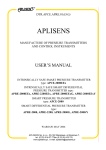
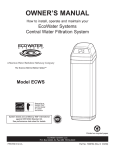
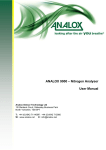
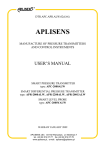
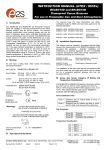
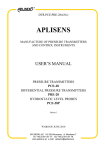
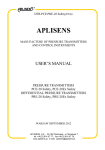
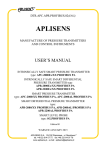
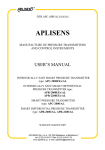
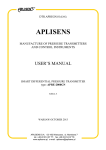
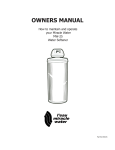
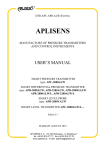
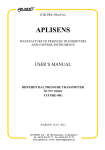
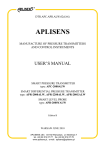
![[17] User`s Manual ver. 2.0.2](http://vs1.manualzilla.com/store/data/005765389_1-e376d351ef2708f30fcfdc5f98b9ba18-150x150.png)

